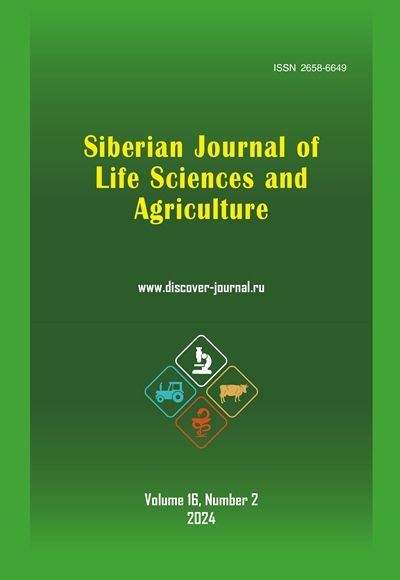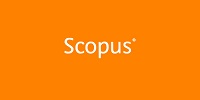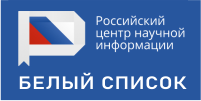ВЛИЯНИЕ РАЗНЫХ ДОЗ СОЛОМЫ И НАВОЗА В СИСТЕМАХ С ЧЕРВЯМИ Eisenia fetida НА ПОКАЗАТЕЛИ РОСТА РАСТЕНИЙ САЛАТА И КАЧЕСТВО СУБСТРАТА
Аннотация
Обоснование. В настоящее время увеличивается потребность в натуральной сельскохозяйственной продукции, что способствует развитию направления получения растительной продукции в условиях искусственных экосистем, функционирующих по принципам естественных ценозов, обладающих определенной гибкостью к возникающим стрессам. Органические остатки могут быть включены в составы биосфероподобных систем при наличии детритофагов и редуцентов, к которым относятся дождевые черви, повышающие продуктивность, экологическую устойчивость и саморегулирующую способность агроэкосистем.
Цель. Изучить влияние соотношения пшеничной соломы и навоза крупного рогатого скота в модельных системах с торфяным субстратом и компостными червями на продуктивность листового салата, параметры развития, агрохимический состав растений и субстратов и популяцию червей.
Материалы и методы. В лабораторных контролируемых условиях изучали влияние внесения органических отходов (пшеничной соломы и навоза в различных соотношениях) в торфяной субстрат при интродукции червей (Eisenia fetida) (10 шт./800 г субстрата) на растения салата (Lactuca sativa сорт Кредо). По окончанию экспериментов измеряли высоту, площадь листовой поверхности, сырую и сухую надземную массу растений, содержание фотосинтетических пигментов; проводили химический анализ субстратов и растительной массы; оценивали адаптационные способности червей по морфофункциональным показателям, рассчитывали их плодовитость и выход копролита; учитывали численность бактерий и микромицетов в субстратах, оценивали актуальную активность азотобактера. Все эксперименты проводили в трех независимых биологических проворностях. Данные, полученные в ходе экспериментов, обрабатывали с помощью пакета StatSoft STATISTICA 10.0.
Результаты. Внесение в субстрат соломы и навоза в присутствии популяции компостных червей способствовало увеличению продуктивности растений салата: возросла площадь съедобной поверхности, масса растений, повысилось содержание фотосинтетических пигментов; изменению в субстрате содержания подвижных форм основных биогенных элементов, значимому снижению содержания общего азота в тканях растений и накоплению фосфора и калия. Внесение пшеничной соломы и навоза в торфяной субстрат увеличивало репродуктивные показатели червей и выход копролита.
Заключение. Показана возможность получения растительной продукции и получения биомассы червей в искусственной экосистеме с разным соотношением соломы и навоза в торфяном субстрате.
Финансирование. Работа выполнена в рамках тематики научных исследований Государственного задания СФНЦА РАН FNUU-2021-0005.
Скачивания
Литература
Список литературы
Битюцкий Н.П., Кайдун П.И. Влияние дождевых червей на подвижность микроэлементов в почве и их доступность растениям // Почвоведение. 2008. Т. 41, № 12. С. 1479-1486.
Величко В.В., Ушакова С.А., Трифонов С.В., Тихомиров А.А. Влияние физико-химической минерализации соломы на формирование урожая пшеницы при выращивании на почвоподобном субстрате // Авиакосмическая и экологическая медицина. 2019. Т. 53, № 3. С. 97-103. https://doi.org/10.21687/0233-528X-2019-53-3-97-103
Головко Т.Г., Тихомиров А.А., Ушакова С.А., Табаленкова Г.Н., Захожий И.Г., Гармаш Е.В., Величко В.В. Продуктивность и биологическая ценность зеленных культур применительно к условиям биорегенеративных систем жизнеобеспечения // Известия Коми научного центра УрО РАН. 2011. Вып. 1(5). С. 31-37.
Данилова Е.Д., Злобин И.Е., Кузнецов В.В., Ефимова М.В. Экзогенный мелатонин снижает токсическое действие полиметаллического стресса на растения ячменя // Доклады Российской академии наук. Науки о жизни. 2021. Т. 499, № 1. С. 348-353. https://doi.org/10.31857/S2686738921040077
Дегерменджи А.Г., Тихомиров А.А. Создание искусственных замкнутых экосистем земно-го и космического назначения // Вестник Российской академии наук. 2014. Т. 84, № 3. С. 23-240.
Лящев А.А. Экологическая оценка популяции дождевых компостных червей // Аграрный вестник Урала. 2009. Т. 64, №10. С. 30-32.
Русакова И.В., Воробьев Н.И. Влияние биопрепарата Баркон на процесс гумификации со-ломы // Агрохимия. 2011. № 1. С. 48-55.
Сазонова И.А., Азизов И.Р., Яковлева Н.А. Оценка эффективности использования отходов грибоводства в процессах вермикультивирования и вермикомпостирования // Аграрный научный журнал. 2022. № 4. С. 44-47. https://doi.org/10.28983/asj.y2022i4pp44-47
Терещенко Н.Н. Эколого-микробиологические аспекты вермикультивирования. Новосибирск, 2003. 116 с.
Терещенко Н.Н., Кравец А.В., Акимова Е.Е., Минаева О.М., Зотикова А.П. Эффективность применения микроорганизмов, изолированных из копролитов дождевых червей, для увеличения урожайности зерновых культур // Сибирский вестник сельскохозяйственной науки. 2013. № 5. С. 10-17.
Шашурина Е.А., Поминчук Ю.А, Редькова Л.А. Биотестирование при определении при-годности илового субстрата для использования его в качестве удобрения // Вестник РГАТУ. 2019. Т. 42, № 2. С. 52-57.
Aasfar A., Bargaz A., Yaakoubi K., Hilali A., Bennis I., Zeroual Y., Kadmiri I.M. Nitrogen fixing Azotobacter species as potential soil biological enhancers for crop nutrition and yield stability // Frontiers in Microbiology, 2021, no. 12, Article no. 628379. https://doi.org/10.3389/fmicb.2021.628379
Biabani A., Carpenter-Boggs L., Gholizadeh A., Vafaie-Tabar M., Omara M.O. Reproduction efficiency of Eisenia foetida and substrate changes during vermicomposting of organic materials // Compost Science & Utilization, 2018, vol. 26, no. 3, pp. 209-215. https://doi.org/10.1080/1065657X.2018.1463877
Blouin M.A., Hodson M.E., Delgado E.A., Baker G., Brussaard L., Butt K.R., Dai J., Den-dooven L., Peres G., Tondoh J.E., Cluzeau D., Brun J.-J. Review of earthworm impact on soil func-tion and ecosystem services // European Journal of Soil Science, 2013, vol. 64, pp. 161-182. https://doi.org/10.1111/ejss.12025
Braga L., Yoshiura C., Borges C., Horn M.A., Brown G.G., Drake H.L., Tsai S.M. Disentangling the influence of earthworms in sugarcane rhizosphere // Scientific Reports, 2016, no. 6. Article no. 38923. https://doi.org/10.1038/srep38923
Curry J.P., Byrne D. The role of earthworms in straw decomposition and nitrogen turnover in arable land in Ireland // Soil Biology and Biochemistry, 1992, vol. 24, no 12, pp. 1409-1412. https://doi.org/10.1016/0038-0717(92)90125-H
Domínguez J., Aira M., Crandall K.A., Pérez‑Losada M. Earthworms drastically change fungal and bacterial communities during vermicomposting of sewage sludge // Scientific Reports, 2021, vol. 11, Article no. 15556. https://doi.org/10.1038/s41598-021-95099-z
Gorbunova A.Yu., Korobushkin D.I., Kostina N.V., Degtyarev M.I., Gongalsky K.B., Zaitsev A.S. Level of soil moisture determines the ability of Eisenia fetida to reincorporate carbon from decomposed rice straw into the soil // European Journal of Soil Biology, 2020, no. 99, Article no. 103209. https://doi.org/10.1016/j.ejsobi.2020.103209
Jacquiod S., Puga-Freitas R., Spor A., Mounier A., Monard C., Mougel C., Philippot L., Blouin M. A core microbiota of the plant-earthworm interaction conserved across soils // Soil Biology and Biochemistry, 2020, vol. 144, Article no 107754. http://doi.org/10.1016/j.soilbio.2020.107754
Jana U., Barot S., Blouin M., Lavelle P., Laffray D., Repellin A. Earthworms influence the pro-duction of above- and belowground biomass and the expression of genes involved in cell prolifera-tion and stress responses in Arabidopsis thaliana // Soil Biology and Biochemistry, 2010, vol. 42, pp. 244-252. https://doi.org/10.1016/j.soilbio.2009.10.022
Lichtenthaler H.K., Wellburn A.R. Determination of total carotenoids and chlorophylls a and b of leaf extracts in different solvents // Biochemical Society Transactions, 1983, vol. 11, no. 5, pp. 591-592. https://doi.org/10.1042/BST0110591
Lirikum, Kakati L.N., Thyug L., Mozhui L. Vermicomposting: An ecofriendly approach for waste management and nutrient enhancement // Tropical Ecology, 2022, vol. 63, pp. 325-337. https://doi.org/10.1007/s42965-021-00212-y
Ramnarain Y.I., Ansari A.A., Ori L. Vermicomposting of different organic materials using the epigeic earthworm Eisenia foetida // International Journal of Recycling of Organic Waste in Agri-culture, 2019, vol. 8, pp. 23-36. https://doi.org/10.1007/s40093-018-0225-7
Sharma D., Prasad R., Patel B., Parashar C.K. Biotransformation of sludges from dairy and sugarcane industries through vermicomposting using the epigeic earthworm Eisenia fetida // Interna-tional Journal of Recycling of Organic Waste in Agriculture, 2022, vol. 11, pp. 165-175. https://doi.org/10.30486/IJROWA.2021.1922034.1196
Sudkolai S.T., Nourbakhsh F. Urease activity as an index for assessing the maturity of cow manure and wheat residue vermicomposts // Waste Management, 2017, vol. 64, pp. 63-66. https://doi.org/10.1016/j.wasman.2017.03.011
Suthar S. Bioremediation of agricultural wastes through vermicomposting // Bioremediation Journal, 2009, vol. 13, no. 1, pp. 21-28. https://doi.org/10.1080/10889860802690513
Tang C.S., Waiss A.C. Short-chain fatty acids as growth inhibitors in decomposing wheat straw // Journal of Chemical Ecology, 1978, vol. 4, pp. 225-232. https://doi.org/10.1007/BF00988057
Van Groenigen J., Lubbers I., Vos H.M.J., Brown G.G., De Deyn G.B., van Groenigen K.J. Earthworms increase plant production: a meta-analysis // Scientific Reports, 2014, vol. 4, Article no. 6365. https://doi.org/10.1038/srep06365
Zaitsev A.S., Gorbunova A.Yu., Korobushkin D.I., Degtyarev M.I., Zhadova A.N., Kosti-na N.V., Gongalsky K.B. The earthworm species Eisenia fetida modulates greenhouse gas release and carbon stabilization after rice straw amendment to a paddy soil // European Journal of Soil Bi-ology, 2018, vol. 89, pp. 39-44. https://doi.org/10.1016/j.ejsobi.2018.10.003
Zotov V.S., Bolychevtseva Y.V., Khapchaeva S.A., Terekhova I.V., Shubin V.V., Yurina N.P., Kulchin Yu.N. Effect of light quality on the biomass yield, photosystem 2 fluorescence, and the to-tal essential oil content of Ocimum basilicum // Applied Biochemistry and Microbiology, 2020, vol. 56, no. 3, pp. 336-343. https://doi.org/10.1134/S0003683820030175
References
Bityutskii N.P., Kaidun P.I. The influence of earthworms on the mobility of microelements in soil and their availability for plants. Eurasian Soil Science, 2008, vol. 41, no. 12, pp. 1306-1313. https://doi.org/10.1134/S1064229308120089
Velichko V.V., Ushakova S.A., Trifonov S.V., Tikhomirov А.А. Evaluation of the effect of straw physical-chemical mineralization on the yield of wheat grown on soil-like substrate. Aviakosmich-eskaya i Ekologicheskaya Meditsina (Russia), 2019, vol. 53, no 3, pp. 97-103.
Golovko T.K., Tikhomirov A.A., Ushakova S.A., Tabalenkova G.N., Zakhozhiy I.G., Garmash E.V., Velichko V.V. Productivity and nutrition value of leaf vegetables as applied to bioregenera-tive life-support systems. Proceedings of the Komi Science Center of the Ural Branch of the Russian Academy of Sciences, 2011, vol. 5, no. 1, pp. 31-37.
Danilova E.D., Kuznetsov V.V., Efimova M.V., Zlobin I.E. Exogenic melatonin reduces the tox-ic effect of polymetallic stress on barley plants. Doklady Biochemistry and Biophysics, 2021, vol. 499, no. 1, pp. 228-232. https://doi.org/10.1134/S1607672921040049
Degermendzhi A.G., Tikhomirov A.A. Designing artificial closed land- and space-based ecosys-tems. Herald of the Russian Academy of Sciences, 2014, vol. 84, no. 2, pp. 124-130. https://doi.org/10.1134/S1019331614020026
Ljashchev A.A. Ecological estimation of populations of earthworms for compost. Agrarian Bul-letin of the Urals, 2009, vol. 64, no. 10, pp. 30-32.
Rusakova I.V., Vorobyev N.I. Effect of the biopreparation Barcon on the humification of straw. Agrohimia, 2011, no. 1, pp. 48-55.
Sazonova I.A., Azizov I.R., Yakovleva N.A. Estimation of the efficiency of use of waste from mushroom in the processes of vermiculturation and vermicomposting. Agrarnyy nauchnyy zhurnal [Agrarian Scientific Journal], 2022, no. 4, pp. 44-47. http://dx.doi.org/10.28983/asj.y2022i4pp44-47
Tereshchenko N.N. Ekologo-mikrobiologicheskiye aspekty vermikul’tivirovaniya [Ecological and Microbiological Aspects of Vermicultivation]. Novosibirsk, 2003, 116 p.
Tereshchenko N.N., Kravets A.V., Akimova E.E., Minayeva O.M., Zotikova A.P. Effectiveness of applying microorganisms isolated from earthworm coprolites in increasing yielding capacity of grain crops. Siberian Herald of Agricultural Science, 2013, no. 5(234), pp. 10-17.
Shashurina E.A., Pominchuk Y.A., Redkova L.A. A bioassay in determining the suitability of silt substrate for use as fertilizer. Vestnik RGATU, 2019, vol. 42, no. 2, pp. 52-57.
Aasfar A., Bargaz A., Yaakoubi K., Hilali A., Bennis I., Zeroual Y., Kadmiri I.M. Nitrogen fix-ing Azotobacter species as potential soil biological enhancers for crop nutrition and yield stability. Frontiers in Microbiology, 2021, no. 12, Article no. 628379. https://doi.org/10.3389/fmicb.2021.628379
Biabani A., Carpenter-Boggs L., Gholizadeh A., Vafaie-Tabar M., Omara M.O. Reproduction efficiency of Eisenia foetida and substrate changes during vermicomposting of organic materials. Compost Science & Utilization, 2018, vol. 26, no. 3. pp. 209-215. https://doi.org/10.1080/1065657X.2018.1463877
Blouin M.A., Hodson M.E., Delgado E.A., Baker G., Brussaard L., Butt K.R., Dai J., Den-dooven L., Peres G., Tondoh J.E., Cluzeau D., Brun J.-J. Review of earthworm impact on soil func-tion and ecosystem services. European Journal of Soil Science, 2013, vol. 64, pp. 161-182. https://doi.org/10.1111/ejss.12025
Braga L., Yoshiura C., Borges C., Horn M.A., Brown G.G., Drake H.L., Tsai S.M. Disentan-gling the influence of earthworms in sugarcane rhizosphere. Scientific Reports, 2016, no. 6, Article no. 38923. https://doi.org/10.1038/srep38923
Curry J.P., Byrne D. The role of earthworms in straw decomposition and nitrogen turnover in arable land in Ireland. Soil Biology and Biochemistry, 1992, vol. 24, no. 12, pp. 1409-1412. https://doi.org/10.1016/0038-0717(92)90125-H
Domínguez J., Aira M., Crandall K.A., Pérez‑Losada M. Earthworms drastically change fungal and bacterial communities during vermicomposting of sewage sludge. Scientific Reports, 2021, vol. 11, Article no. 15556. https://doi.org/10.1038/s41598-021-95099-z
Gorbunova A.Yu., Korobushkin D.I., Kostina N.V., Degtyarev M.I., Gongalsky K.B., Zaitsev A.S. Level of soil moisture determines the ability of Eisenia fetida to reincorporate carbon from decomposed rice straw into the soil. European Journal of Soil Biology, 2020, no. 99, Article no. 103209. https://doi.org/10.1016/j.ejsobi.2020.103209
Jacquiod S., Puga-Freitas R., Spor A., Mounier A., Monard C., Mougel C., Philippot L., Blouin M. A core microbiota of the plant-earthworm interaction conserved across soils. Soil Biology and Biochemistry, 2020, vol. 144, Article no 107754. http://doi.org/10.1016/j.soilbio.2020.107754
Jana U., Barot S., Blouin M., Lavelle P., Laffray D., Repellin A. Earthworms influence the pro-duction of above- and belowground biomass and the expression of genes involved in cell prolifera-tion and stress responses in Arabidopsis thaliana. Soil Biology and Biochemistry, 2010, vol. 42, pp. 244-252. https://doi.org/10.1016/j.soilbio.2009.10.022
Lichtenthaler H.K., Wellburn A.R. Determination of total carotenoids and chlorophylls a and b of leaf extracts in different solvents. Biochemical Society Transactions, 1983, vol. 11, no. 5, pp. 591-592. https://doi.org/10.1042/BST0110591
Lirikum, Kakati L.N., Thyug L., Mozhui L. Vermicomposting: An eco-friendly approach for waste management and nutrient enhancemen. Tropical Ecology, 2022, vol. 63, pp. 325-337. https://doi.org/10.1007/s42965-021-00212-y
Ramnarain Y.I., Ansari A.A., Ori L. Vermicomposting of different organic materials using the epigeic earthworm Eisenia foetida. International Journal of Recycling of Organic Waste in Agricul-ture, 2019, vol. 8, pp. 23-36. https://doi.org/10.1007/s40093-018-0225-7
Sharma D., Prasad R., Patel B., Parashar C.K. Biotransformation of sludges from dairy and sug-arcane industries through vermicomposting using the epigeic earthworm Eisenia fetida. International Journal of Recycling of Organic Waste in Agriculture, 2022, vol. 11, pp. 165-175. https://doi.org/10.30486/IJROWA.2021.1922034.1196
Sudkolai S.T., Nourbakhsh F. Urease activity as an index for assessing the maturity of cow ma-nure and wheat residue vermicomposts. Waste Management, 2017, vol. 64, pp. 63-66. https://doi.org/10.1016/j.wasman.2017.03.011
Suthar S. Bioremediation of agricultural wastes through vermicomposting. Bioremediation Journal, 2009, vol. 13, no. 1, pp. 21-28. https://doi.org/10.1080/10889860802690513
Tang C.S., Waiss A.C. Short-chain fatty acids as growth inhibitors in decomposing wheat straw. Journal of Chemical Ecology, 1978, vol. 4, pp. 225-232. https://doi.org/10.1007/BF00988057
Van Groenigen J., Lubbers I., Vos H.M.J., Brown G.G., De Deyn G.B., van Groenigen K.J. Earthworms increase plant production: a meta-analysis. Scientific Reports, 2014, vol. 4, Article no. 6365. https://doi.org/10.1038/srep06365
Zaitsev A.S., Gorbunova A.Yu., Korobushkin D.I., Degtyarev M.I., Zhadova A.N., Kosti-na N.V., Gongalsky K.B. The earthworm species Eisenia fetida modulates greenhouse gas release and carbon stabilization after rice straw amendment to a paddy soil. European Journal of Soil Biol-ogy, 2018, vol. 89, pp. 39-44. https://doi.org/10.1016/j.ejsobi.2018.10.003
Zotov V.S., Bolychevtseva Y.V., Khapchaeva S.A., Terekhova I.V., Shubin V.V., Yurina N.P., Kulchin Yu.N. Effect of light quality on the biomass yield, photosystem 2 fluorescence, and the to-tal essential oil content of Ocimum basilicum. Applied Biochemistry and Microbiology, 2020, vol. 56, no. 3, pp. 336-343. https://doi.org/10.1134/S0003683820030175
Просмотров аннотации: 174 Загрузок PDF: 167
Copyright (c) 2024 Tatyana I. Zyubanova, Oksana M. Minaeva, Elena E. Akimova, Marina E. Kirillova, Elena E. Akimova

Это произведение доступно по лицензии Creative Commons «Attribution-NonCommercial-NoDerivatives» («Атрибуция — Некоммерческое использование — Без производных произведений») 4.0 Всемирная.






















































